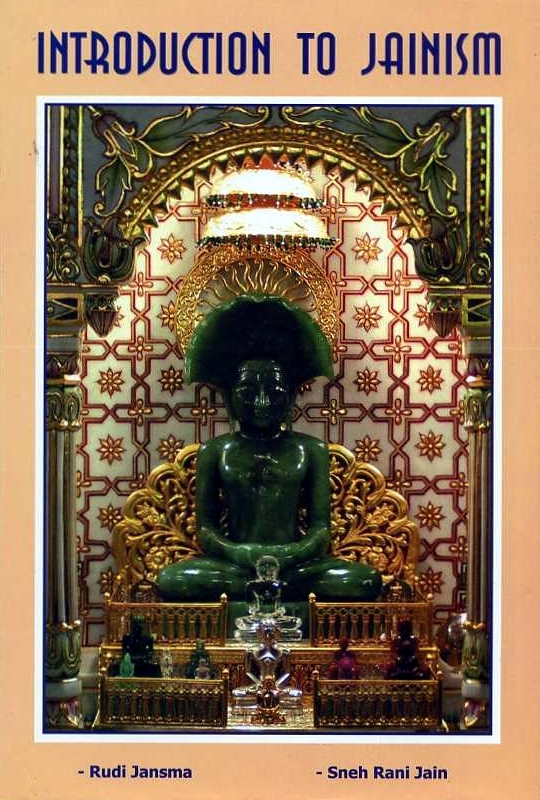This section (Book: pp. 49 - 69) was written by Surendra Bothra, Jaipur, India, and is used with his kind permission. |
Anukampā, compassion or grace, as it is defined in the Digambara Sūdha Sagar Hindi-English Jain Dictionary [29], means "If anyone is moved at the sight of the hungry and the miserable offers relief to him, out of pity, then such behavior of that person is love or charity." Nevertheless, compassion can, and has been, interpreted in two different aspects: the passive and the active. It has sometimes been said by outsiders, and even by some sects within Jainism, that ahimsā, non-violence, and anukampā, compassion, are to be interpreted in a passive way only. Such people will not take initiatives to help those who are suffering; they will not actively lend a helping hand to those in need. If this is practiced by common people, including monks and ascetics, it seems to point to a dogmatic interpretation (perhaps born of hidden arrogance) of the highest aspect of compassion, but without really understanding the teaching. Only when one has really acquired the wisdom of the Great Souls is genuine judgment possible. The teaching is this: Though the omniscient liberated souls are filled with compassion, they are not moved by it. Though they see the suffering of all beings, they have done the only thing which is appropriate: to preach the universal doctrines of self-liberation and karma, which includes the path of shedding of karmas with the aim of reaching ultimate freedom. As this doctrine is given to everyone, the choice is also for everyone. Great saints and monks continuously remind the people of this path. Interfering with the karma of someone who deviates from the innate harmony of his own nature is like numbing his own hand before he puts it in the fire: he will never learn that fire is hot and dangerous, because he lacks the pain which nature has given to sentient beings to teach and warn them. The highest ascetics would no doubt apply this interpretation of compassion and nonviolence to themselves, and when in particular cases, they judge it the best, to others.
For the well-being of the confused creatures in the world that most of us are, the layman will follow his natural feeling and emotion of active compassion. The greatest saints, including Mahāvīra himself, have proclaimed the necessity of active compassion, and this is what made Jains (together with Mahayana Buddhists) the greatest practical benefactors in the world. In Christianity the core teaching is also love, compassion and helpfulness for one's neighbor, and they practice it worldwide and on a large scale; but the first and highest meaning of compassion seems almost completely lost among them. The result is that in the modern world the "right to suffer" for those who choose that as their noble individual path, is almost denied.
Both aspects of compassion are clearly explained by Lord Mahāvīra himself, 2550 years ago, when he defines ahimsā thus:
"The saint with true vision conceives compassion for all the world, in east and west and south and north, and so, knowing the Sacred Lore, he will preach and spread and proclaim it, among those who strive, and those who don't, among all those who are willing to hear him... He should do no injury to himself or anyone else... A great sage becomes a refuge for injured creatures like an island which the waters can not overwhelm."
- Sūtra (1.6.5)
In the authoritative Tattvārtha Sūtra we find: "One should cultivate the feelings of fraternity toward all beings, pleasantness towards the proficient, compassion toward the destitute and equanimity toward the disrespectful disbelievers." Of course the destitute will not feel warmth in their heart when passive compassion is practiced on them: they will feel left alone, desperate and disappointed, and they may as a reaction only harden their character, causing even unpleasant karma for themselves (Ts 7.6).
And elsewhere: "Be ready to help and provide refuge to the destitute and helpless."
- Sthānānga Sūtra, Ch. VIII
And perhaps the clearest statement supporting active compassion is found in a dialogue between Mahāvīra himself and his main disciple, Gandhara Gautama, in the Avaśyaka Sūtra:
Bhagavan! Who is to be commended, the one who serves you or the one who serves the ailing and distressed?
Gautama! He who serves the ailing and distressed is to be commended.
Bhagavan! Why is this so?
Gautama! He who serves the ailing and the distressed, serves me. He who serves me serves the ailing and the distressed. This is the pith and substance of the doctrine of the arhats. Therefore, O Gautama! I say: He who serves the ailing and the distressed, serves and worships me.... Therefore, one who serves is to be commended.- Avaśyaka Sūtra, leaves 661-662
A book, available in Hindi only written by K.L. Lodha, called Sakaratmak Ahimsā; Shastriya aur Charitrik Aadhar [30], is entirely dedicated to this topic of the meaning of practical compassion in authoritative Jain literature, both Śvetambara and Digambara. The following quotes are taken from this book:
A person when moved by seeing a thirsty, hungry or distressed being acts with sympathy towards him; this is his compassion.
- Panchāstikāya by Kundakundāchārya (137)
Compassion is the intrinsic nature of soul (living being), therefore there is an inherent contradiction in accepting it to have been caused by karma.
- Dhavala Tika by Vīrasena (13/362)
Dharma (religious duty) is that which has been refined by compassion.
Bodha Pahuda by Kundakundāchārya (25)
We have thus seen that the idea that Jainism is negative and passive is completely erroneous, and that the opposite is more than clear if we observe the daily practice of the Jain community.
 Dr. Sneh Rani Jain
Dr. Sneh Rani Jain
 Publisher:
Publisher: